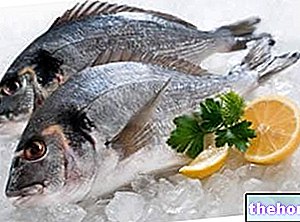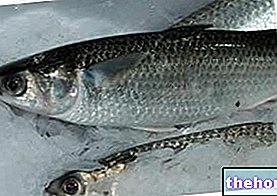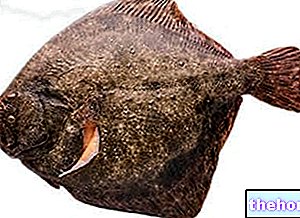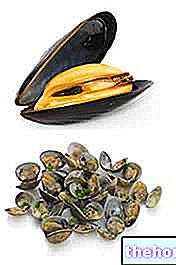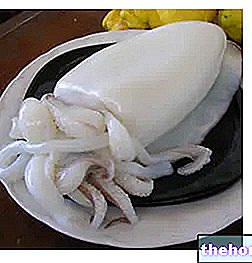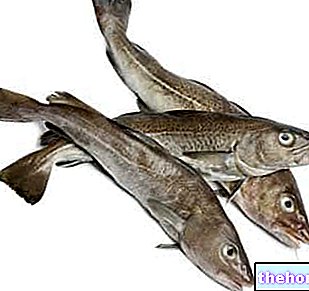What is Bottarga
Bottarga is a preserved food of animal origin, which is part of the fishery products and is typical of the Tyrrhenian coastal areas. It is the oviparous sac (ovaries or female gonads, called "baffe") of the tuna or mullet, extracted from the animal, washed, salted and seasoned. The bottarga has a characteristic structure, since traditionally it should be processed whole.

Although bottarga may be a typically Italian food, very similar foods are also produced abroad. In fact, the term "bottarga" seems to have Arabic roots (batārikh - preservation in salt) and there are numerous similar preparations also in Africa, the Middle East, Spain and Greece.
Bottarga is typical of the major islands, Sardinia and Sicily, but today it is also produced to a large extent in other regions. In Sicily, the proper bottarga would be that of bluefin tuna (Thunnus thynnus - today subjected to strict sampling regulations and almost completely replaced by yellow fin tuna - Thunnus albacares), while in Sardinia it is ALSO widespread that of mullet (Mugil cephalus).
As far as the "legislative food aspect is concerned," Bottarga, tuna egg "and" Bottarga, Capo San Vito tuna egg, santovitaro tuna egg "have been merged into the list of" Traditional Sicilian Agri-food Products "; in the list of "Traditional Sardinian Agri-food Products" there are the words: "Bottarga di mullet, bottariga di mullet" and "Bottarga di tuna, bottariga di tuna, buttariga di tonnu, buttarga de tonnu, tossarla de scampirru".
It is necessary to specify that bottarga (Sicilian or Sardinian) has NOT yet obtained any IGP or DOP type recognition, but only of "Typical"; therefore, also in other regions of Italy (eg Tuscany and Calabria) they are distributed similar foods with the generic term of "Bottarga" and the specification of "Traditional Product".
At the same time, there are other types of bottarga (also available in native regions) that do not respect traditional processing, since they contain tuna, mullet, amberjack, grouper eggs etc. in the form of dried powder without the containing ovarian membrane.
Nutritional Features and Recipes
Bottarga is a very caloric food, even if, considering the small portion of consumption (a few grams), its nutritional impact "should" be limited.
Calories essentially come from lipids and proteins (with a high biological value), while carbohydrates are absent.

Nutritional values (per 100 g of edible portion)
Fibers are also not present, while cholesterol seems very abundant.
From the bibliographic source used, no further details are available regarding the breakdown of fatty acids (probably in favor of polyunsaturates) but, given the significant presence of cholesterol, even if this parameter is actually positive, bottarga should still be excluded from the " hypercholesterolemic nutrition.
Bottarga is very rich in sodium chloride; this ingredient, which is 40% sodium (Na), is responsible for the increased risk or worsening of arterial hypertension. Obviously, this food is not recommended in the diet of those who already suffer from this disorder.
Unfortunately there are no further details regarding the vitamin and salt profile; on the other hand, since we are dealing with fish eggs, it is conceivable that both these parameters are more than satisfactory (abundance of Iron, vitamin D, vitamin A, vitamin B12 etc.).
Bottarga is a strongly flavored and savory food. The hints of fish are very intense and the flavor is characterized by a bitter aftertaste that vaguely recalls almonds.
The culinary destinations of bottarga are of various types.It can be an appetizer if accompanied with croutons, perhaps with extra virgin olive oil and / or ricotta; moreover, it brilliantly acts as the main ingredient for many accompanying sauces (spaghetti with bottarga are famous) and replaces grated cheese in fish-based first courses.
Bottarga is considered a "more" rustic "but cheaper alternative to sturgeon eggs (it is often proposed as" Mediterranean caviar "). , lemon and a little parsley, or already grated to embellish pizzas and pasta dishes in an instant.
How is the Original Bottarga Made?
The "proper" bottarga has an oval and elongated shape; it can be of various sizes, which vary according to the species (mullet or bluefin tuna or yellowfin tuna), the age of the animal and the time of collection; that of mullet frequently exceeds 100g, while that of tuna can exceed 1000g.
The color of the tuna bottarga is brown on the outside and reddish on the inside, while that of the mullet bottarga is amber on the outside and dark yellow on the inside.
Homemade production
For the production of bottarga it is sufficient to obtain: fresh tuna or mullet gonads (Mugil cephalus) and fine sea salt.
The ovaries are difficult to find and can be obtained directly from the female fish caught in the autumn. Obviously, it is advisable to start with the production of mullet bottarga, buying 3 or 4 mullets at a time.

At this point, in a deep container, arrange a layer of medium-fine-grained salt, then the ovaries, and on top of another fine salt.
Now, shape a wooden board to make it pass inside the container and, on top of it, place a ballast with a mass of 5kg. For the first 10 days it is necessary to change the salt frequently (which will absorb water), observing the " flattening and reduction of bottarga. ATTENTION! Use a room with a temperature between 18 and 25 ° C.
At the end of the salting phase we proceed with the seasoning. This process must take place in a cool, dry and ventilated room; the bottarga must be extracted from the container and, possibly, totally exposed to the air for a few months (from 2 to 10, taking care to protect it from insects or other animals).
Fish, Molluscs, Crustaceans Anchovies or Anchovies Garfish Alaccia Eel Lobster Herring Lobster Whitebait Bottarga Sea bass (Sea bass) Squid Canocchie Scallops Canestrelli (Sea scallops) Capitone Caviar Mullet Monkfish (Monkfish) Mussels Crustaceans Dates Sea Fruits Fish Flour Fauna Fish stock Prawns Crabs Spider crab (Granceola) Halibut Sea salad Lanzardo Leccia Sea snails Prawns Cod Molluscs Octopus Hake Ombrina Oysters Sea bream Bonito Pangasius Paranza Anchovy paste Fresh seasonal fish Blue fish Puffer fish Swordfish Plaice Octopus (Octopus) Hedgehog of Sea Amberjack Salmon Sardines Sardines Scampi Cuttlefish Mackerel Sole Stockfish Surimi Sushi Telline Tuna Canned tuna Mullet Trout Fish roe Bluefish Clams OTHER FISH ARTICLES Categories Alcoholic Food Meat Cereals and derivatives Sweeteners Sweets Offal Fruit Dried fruit Milk and derivatives Legumes Oils and fats Fish andpeach products Salami Spices Vegetables Health recipes Appetizers Bread, Pizza and Brioche First courses Second courses Vegetables and Salads Sweets and Desserts Ice creams and sorbets Syrups, liqueurs and grappa Basic preparations ---- In the kitchen with leftovers Carnival recipes Christmas Light diet recipes Women's, mom's and dad's day recipes Functional recipes International recipes Easter recipes Celiac recipes Diabetic recipes Holiday recipes Valentine's Day recipes Vegetarian recipes Protein recipes Regional recipes Vegan recipes

